When Two Worlds War

| a game by | Impressions Games |
| Platform: | PC (1993) |
| User Rating: | 8.7/10 - 3 votes |
| Rate this game: | |
| See also: | Download Strategy Games, Space Games |
Whenever I think of Impressions' games I always think of those ridiculous little redcoats marching robotically around Rorke's Drift pursued by equally badly animated Zulus. Old Bromhead and his mob in the 24th Foot would turn in their graves if they could see that lot. Not surprisingly, when I was caught napping by the editor with a request to look at a space combat game from the same outfit, my first thought was to pretend to be an answer phone. Then the bills started piling in again and here we are.
At least When Two Worlds War looks a little different. If nothing else it's warfare on a galactic scale so there shouldn't be too many badly animated, green-eyed monsters wandering about - just badly animated little spaceships and tanks. The box looks pretty good too: 'A Strategic Simulation of Interplanetary Conflict', it screams in a futuristic-looking typeface. That sort of thing always amuses me - just how, exactly, do you simulate something that has never actually happened? At least we don't know if it's ever happened, which amounts to much the same thing.
Voice activation
The game comes on two high density disks and takes up around 6Mb of hard disk space though you could reduce that substantially by ditching the digitised speech. Quite a few sound cards are supported, including something called an Aria speech recognition card which I don't happen to have come across before. However, if you've got one of these, you're supposed to be able to sit back on the sofa and bellow at the game instead of pointing and clicking with the mouse. Whilst 'move out of the way of that bloody missile you prat' probably isn't the best way to play the game, and may even lead to rsi of the vocal chords, there is a serious side. It is nice to see games designers building in support lor those who tnav really need cards like the Aria: people with limited limb movement being a prime example.
The documentation is very good too and you get plenty of paper for your pennies, including an 120 page manual, another 50 pages of technical supplement and tutorial, and a good quick reference card. While a 386 or better is recommended, only 640K of ram is required and it works well with the usual binful of tsrs that we pc owners like to accumulate. I'd would have thought it would be quite playable on a standard 286 as it isn't particularly demanding on the hard disk or the CPU. Still, that's what they recommend.
Installation uses the now indispensable installation routine that also configures the sound options too. The intro is short and sweet - a plus point in my book as I hate having to constantly wade through repetitive intros. The first thing you see is the main menu with several setup options. Here you can customise your war any way you choose, from the name and type of planet to the starting technology level, and there's an easy setup option to take you step by step through the process. Once you've got used to the game system, you can skip the option and go straight to the meat.
The first big disappointment hits you here. What are triumphantly called 256 colour vga graphics on the package end up as very low resolution 320 by 200 screens that aren't vga in my book at all. It might have oodles of extra colours but they're not really needed - give me 640 by 480 with 16 colours any day.
Was that supposed to be a joke?
The aim of the game, as it were, is to conquer your enemy's planet. This you do by immersing yourself in a really silly scenario that pretends your pc is a Westock-Waadam Warfare Workstation. It's a joke you see. You're supposed to think that you're sitting in front of an electronic warfare computer which is controlling the whole interplanetary war but really you are sitting in front of a pc which is pretending to be an electronic warfare computer which is pretending to control the war... Oh never mind.
The manual is full of jokes along these lines too. The best one is the difference between the basic and deluxe versions. Apparently the deluxe version has a full sensory immersion system that lets you control things by nodding unspecified bits of your anatomy but due to physiological limitations of the cerebral cortex, humanoids can only use the basic version with a Manually Operated Utility Selector. Get it? I won't tell you what the worst joke was.
The problem with When Two Worlds War is that halfway through your first game, you end up cursing your pathetic cerebral cortex, wherever that is. and wishing you had the deluxe version because the control system is one of the most complicated I have ever come across. My cerebral cortex got twisted into knots just trying to work out how to get a unit to do anything. And. before you start. I did read the manual. Well, most of it.
Anyway, back to the beginning. The essence of the game is that you play red while the computer plays blue. That's easy. You each have a planet and there's a lump of space in-between. Everything's strictly 2D by the way and there's no wrap around, presumably so as to not to strain the cerebral cortex even further. To start out on your conquering career, you have to construct resource generators - power stations, mines, farms and labs - to build up resources which you can turn into military units, or mus in game parlance.
The object of the mus is to explore and attack the enemy planet and destroy his resources while safeguarding your own. Space travel is vital, of course, so the space travelling mus have cargo capability to transport the land, sea and air based units. All the while this is going on, you have to keep up research in order to improve your tech levels in the various technologies - land. sea. air and space travel, fire power, range and targeting, and armour, radar and transport capability. The mus can be organised into squads, with general instructions to attack. hold, defend and so on. You also have to keep sufficient farms going to feed your men and expand the number of bases on your home planet.
At the start of the game the whole of the enemy planet is invisible, much like the classic Empire game from the now defunct Interstel, on which When Two Worlds War seems to be based quite heavily. As you land units on the red planet, more and more becomes visible, enabling you to develop strategies more easily and concentrate your forces in the right place. The best strategy seems to be to insert a few fast scout ships onto the enemy planet, revealing as much as possible before they are blown into bursts of little red pixels.
Quicksand
Now all this appears pretty complicated and it probably sounds just the sort of thing you were looking for. Well, you haven't even heard half of it yet and it starts to go downhill from here. Empire was a classic game: you moved units around, exploring hidden parts of the game world and building units to replace losses. That was basically all there was to it and it was this simplicity that made it the classic that it became. When Two Worlds War takes the same theme and adds so much extra complexity that it is all too easy to end up in a quicksand of rules, not knowing which button to press next. This is guaranteed to kill anyone's enthusiasm for a game and in excitement terms, it's the equivalent of a bucket of cold water.
The game tries hard to be comprehensive. You can order your units to do almost anything by using a kind of object orientated command system where missions are built up from a dozen or so simple commands - fly to here, unload two tanks, bomb the farm over there and go back to base. If you're not into that level of detail, there are what the game calls q& a missions that are simpler to order (e.g. fly to the red planet and patrol the northern half).
At the other end of the equation are the direct control missions where you basically fly or drive the unit yourself but the commander who gets his hands dirty isn't doing the job right so it should only be used in emergencies.
In all the interface is well designed but paradoxically it is also confusing and not helped at all by the low resolution graphics. Some of the icons on the smaller buttons are merely blobs and don't improve the playability. There is just too much information to handle and with somewhere near the limit of too mus in action, controlling the game can be a nightmare. However, the tutorial helps adjust the balance and the manual is certainly extensive. It doesn't quite go far enough in terms of hints and tips leaving newcomers to the game a little unsure of what best to do. It can be hard to send some forces on the offensive, return to the main screen to produce a few more or cope with a new threat, then return to the enemy planet to find a couple of burning hulks. This never knowing what happened is a major obstacle to the gameplay.
One thing that helps initially is the digitised speech. Each time something happens, a digitised male voice provides an update, but it can start to get irritating after a while. Turning it off doesn't help either, as there are no dialogues to replace the spoken messages and the only option is to keep listening - at least until you've got a bit further with the game system.
When Two Worlds War isn't so much a wargame as a strategy game and a complicated one at that. If you're looking for a real challenge in terms of detailed rules and a huge playing space with scattered actions, it might just fit the bill, but those wanting gameplay and fast action will be disappointed. Underneath the mass of detail there's a good game trying to get out. Unfortunately it's just too well buried.
Download When Two Worlds War

System requirements:
- PC compatible
- Operating systems: Windows 10/Windows 8/Windows 7/2000/Vista/WinXP

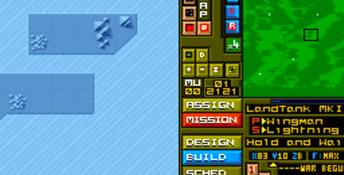
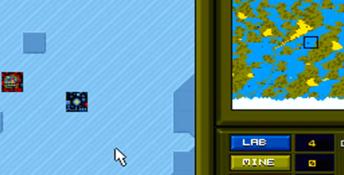



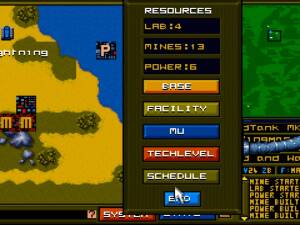


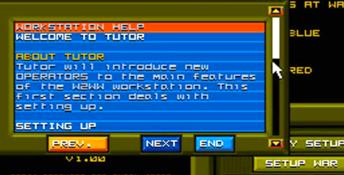
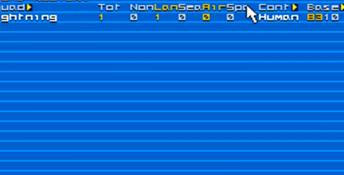
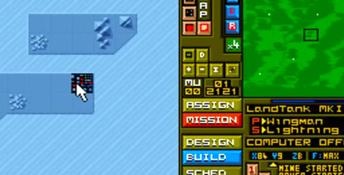
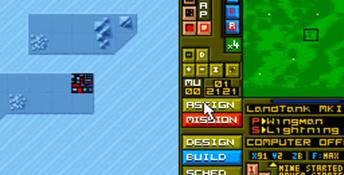


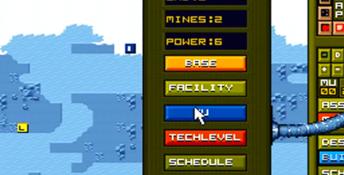
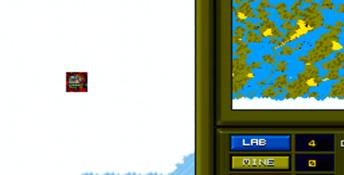
 Archimedean Dynasty
Archimedean Dynasty
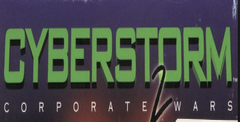 Cyberstorm 2: Corporate Wars
Cyberstorm 2: Corporate Wars
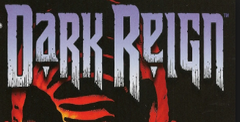 Dark Reign
Dark Reign
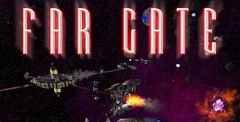 Far Gate
Far Gate
 Liberty or Death
Liberty or Death
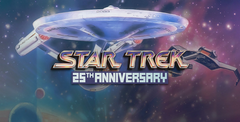 Star Trek: 25th Anniversary
Star Trek: 25th Anniversary
 StarLancer
StarLancer
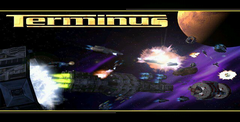 Terminus
Terminus
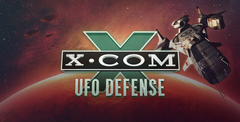 X-Com UFO Defense
X-Com UFO Defense